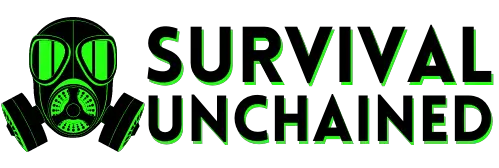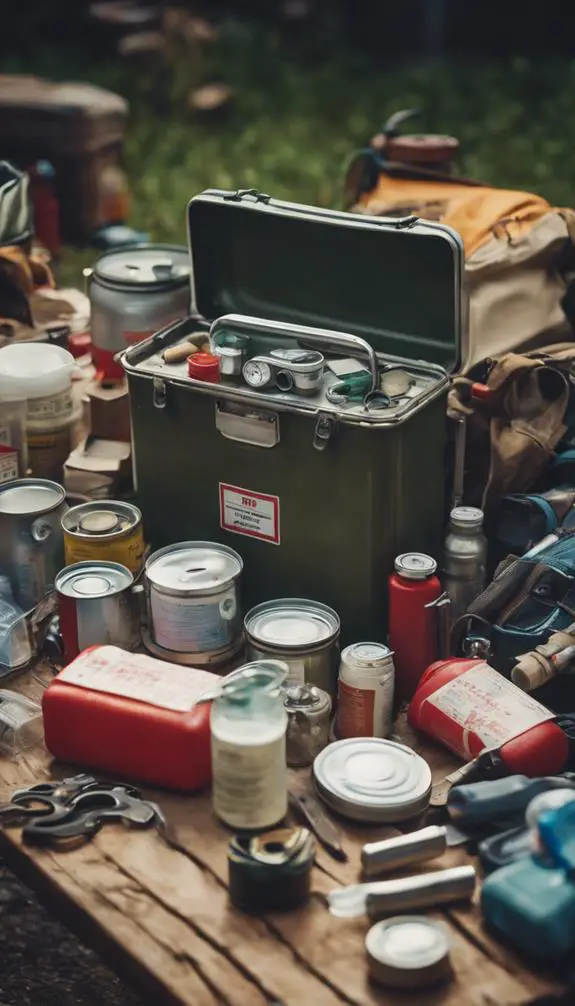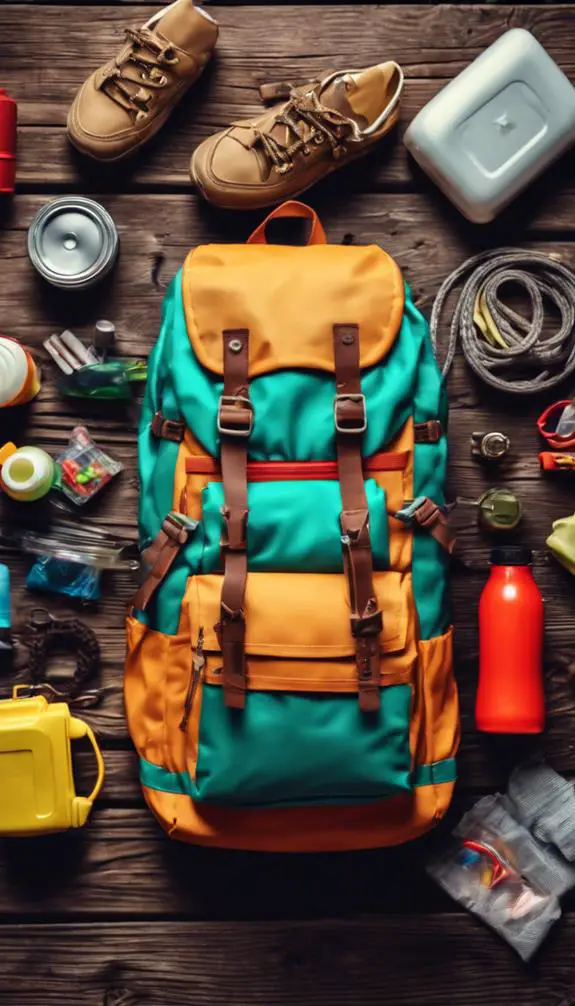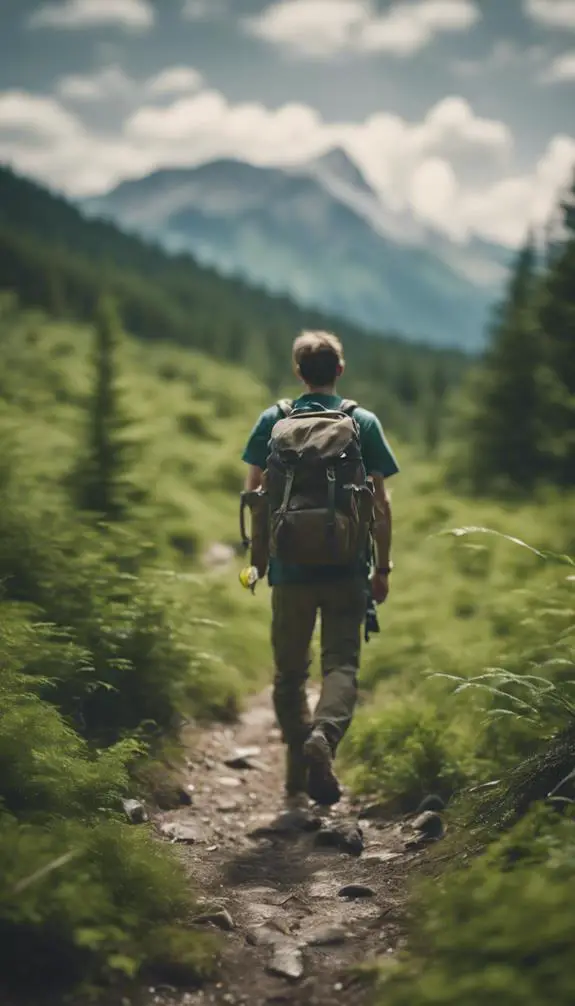So, you wanna prep? Good. It’s not just about hoarding canned beans and waiting for the apocalypse. You need a game plan—a real one. Start by evaluating what you need and the risks you face. Think food, water, gear. And don’t forget a communication plan; yelling won’t cut it. Get ready to roll up your sleeves, because it’s time to build your emergency supplies. Trust me, it’s a wild ride, but are you up for the challenge?
Summary
- Conduct a needs analysis and risk assessment to identify essentials and potential challenges for effective survival preparation.
- Create a comprehensive checklist of essential supplies, including food, water, first aid kits, and tools for emergency situations.
- Develop a communication plan to ensure clear and direct messaging among all individuals involved in emergency preparedness.
- Practice regular drills to reinforce emergency procedures and adapt scenarios for various potential emergencies.
- Engage with your community to share resources, knowledge, and skills that enhance overall preparedness and resilience.
Assess Your Needs and Risks
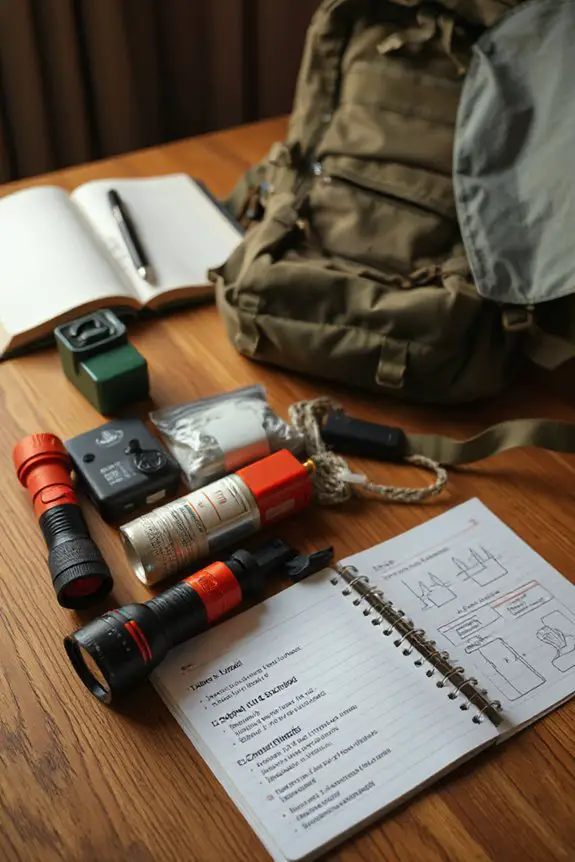
So, how do you figure out what you really need and what risks are lurking around the corner? Start with a solid needs analysis.
Grab a pen, jot down what you can’t live without. Water? Check. Food? Double check.
Next, plunge into a risk assessment. Think outside the box—what could go sideways? Natural disasters? Supply chain hiccups? Write it down.
Don’t sugarcoat it; face the ugly truths. This isn’t a game; it’s survival.
I can’t stress enough—know your vulnerabilities. You’ll thank yourself later. Trust me, when the chips are down, you’ll be glad you did your homework. Consider setting emergency prepping goals that align with your identified risks to better prepare yourself for potential challenges.
Create a Comprehensive Checklist
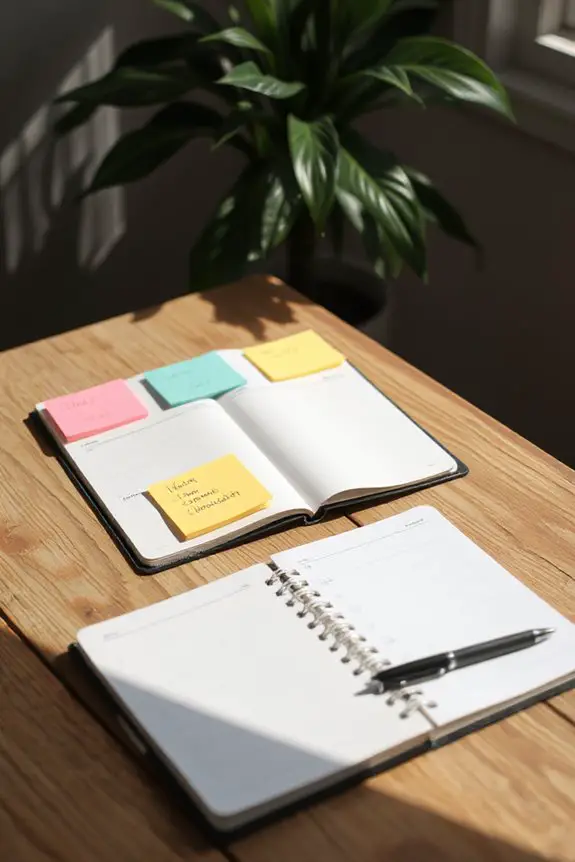
Alright, let’s get real about checklists. You’ve got to pin down what’s essential, set some deadlines, and prioritize like it’s a life-or-death cooking competition. Organizing by categories isn’t just smart—it’s the difference between a smooth prep session and a chaotic kitchen disaster. Additionally, consider implementing a stock tracking system to effectively monitor your inventory and ensure you have what you need on hand.
Identify Essential Items
When it comes to prepping, I can’t stress this enough: a solid checklist is your best friend. Don’t just wing it! You need to identify essential items like survival gear—what’s gonna keep you alive when the chips are down?
Think food, water, first-aid stuff, tools, and a reliable way to purify water. Channel that prepper mindset! Ask yourself: What do I really need? Jot it all down.
Don’t forget to include items for water storage to ensure you have a reliable supply when needed. Don’t forget a backup plan; life’s messy. And hey, if you just shove a bunch of stuff in a bag, you’re not prepping—you’re hoarding.
Be smart, be ready, and don’t skip the details!
Set Deadlines and Priorities
Setting deadlines and priorities is where the rubber meets the road in prepping.
Let’s face it—without time management and goal setting, you’re just spinning your wheels. Grab a pen and paper. Write down your goals, then slap a deadline on each one. Yes, I mean it! Make them bite.
Break it down: daily, weekly, monthly tasks. Want to feel accomplished? Cross things off that checklist like a boss.
And don’t forget, life’s messy; adjust as needed. If you miss a deadline, don’t sweat it. Just recalibrate. Remember, it’s a journey. Stockpile essentials to ensure you’re prepared for any emergency situation.
Let’s get organized and smash those goals!
Organize by Categories
You’ve got your deadlines set, but what’s next? Let’s plunge into category sorting. I swear, item grouping is the secret sauce to success. Take a breath, grab your supplies, and start tossing things into piles: tools, ingredients, whatever! Trust me, it’ll save your sanity later.
Create a checklist as you sort; it’ll keep you on track and guarantee nothing’s left behind. Keep it simple, keep it focused, and for goodness’ sake, label those categories. In addition, make sure to include non-perishable food essentials in your organization to ensure you’re prepared for any situation. You got this!
Build Your Emergency Supplies

Alright, let’s get real about emergency supplies.
You don’t want to be the one caught empty-handed when the unexpected hits, right? Having a well-organized supply of non-perishable items can make a significant difference during a crisis.
Essential Supply Items
When it comes to building your emergency supply stash, there are a handful of essential items you can’t afford to overlook.
You need a solid first aid kit—because let’s face it, boo-boos happen. Water purification tablets? Absolutely, unless you want to drink swamp juice.
Don’t forget food preservation gear to keep your snacks fresh. Emergency kits are a must, and hey, a weather radio keeps you in the loop.
Multi-tools? Yup! They’re your Swiss Army lifesavers. Fire starters and portable chargers for when the lights go out, and self-defense tools for peace of mind. Additionally, having navigation tools can greatly enhance your ability to find your way in unfamiliar territory.
Mental preparedness? That’s your secret sauce.
Storage and Organization Tips
Stashing your emergency supplies is like prepping a gourmet meal—organization is key, or you’ll end up with a kitchen nightmare.
Seriously, who wants to dig through chaos when the clock’s ticking? I swear by clear bins for easy visibility and labels that scream what’s inside.
Use shelves for vertical storage; it’s like stacking your spice rack—smart and space-saving.
Rotate supplies using the FIFO method—first in, first out.
Got a favorite snack? Store it up high, outta reach of the kids.
Trust me, a little organization goes a long way. Keep it tight, keep it right, and always be ready!
Develop a Communication Plan
Communication plans are the secret sauce to a smooth operation—like the perfect blend of spices that elevates a dish from bland to bold.
I can’t stress enough: know your audience. Immerse yourself in audience analysis and figure out who you’re talking to. Are they preppers or newbies? That’ll shape your message.
Next, choose your communication tools wisely—think group chats, emails, or even good old-fashioned bulletin boards. Be direct, be clear, and don’t sugarcoat it. Cut the fluff.
What’s the goal? Share essential info without drowning in details. Remember, good communication can make or break your prep game. Simple as that!
Learn Basic Survival Skills
Survival skills? You bet! Fire starting and shelter building are your bread and butter.
Grab some dry leaves, twigs, and a trusty lighter or flint—you want that fire roaring, right? Don’t just fumble around; practice until you can ignite a blaze in your sleep.
As for shelter, find sturdy branches and leaves. Lean them against something solid. Voilà, you’ve got a makeshift home!
Remember, it’s not just about surviving; it’s about thriving. So, get your hands dirty, embrace the chaos, and don’t whine when it gets tough.
You’re tougher than you think—prove it! Let’s do this!
Stay Informed About Local Hazards
When you think about staying safe in the wild, don’t overlook your surroundings. I mean, seriously—what good are all your skills if you’re blind to the threats out there?
Stay on top of hazard awareness. Check local emergency alerts like they’re your daily weather forecast. Know what’s brewing: storms, wildfires, or even pesky pests.
It’s like checking your pantry before cooking. You wouldn’t toss in ingredients without knowing what you’ve got, right? So, don’t head into the wild uninformed.
Keep your eyes peeled, trust your gut, and remember: knowledge is your best weapon against the unexpected. Stay sharp, stay safe!
Practice Regular Drills
You can’t just throw a bunch of ingredients together and hope for a masterpiece, right? Practicing regular drills is the secret sauce.
I set a drill frequency that keeps everyone on their toes—think every month, not once a year. Mix in scenario variations; don’t just rehearse the same old routine. Spice it up!
What if there’s a fire? An earthquake? You gotta be ready for anything. It’s like cooking; if you don’t practice, you’ll burn the meal.
Evaluate and Update Your Plan
Evaluating and updating your plan isn’t just a good idea—it’s essential.
I mean, how else are you gonna know if your strategies still pack a punch? Regular plan evaluation keeps you sharp and ready; it’s like tasting your dish mid-cook.
Don’t let stale tactics ruin your game. I update strategies based on what works and what doesn’t. If something’s off, tweak it—don’t let it simmer too long.
Trust me, you don’t want to serve up a half-baked plan. So, dig in, get your hands dirty, and make sure your prep is as fresh as the ingredients you use.
Connect With Your Community
Connecting with your community isn’t just some nice-to-have; it’s the secret sauce that can elevate your prep game to a whole new level.
Seriously, local resources and community events can turn a solo gig into a group effort. Ever been to a community swap? It’s like a treasure hunt—swap seeds, canning tips, or even bulk goods.
Plus, you’ll find folks who’ve got skills you need. So, jump in! Attend meetings, volunteer, or just chat with your neighbors.
It’s not just about stockpiling; it’s about building a network. Trust me, you’ll prep better when you’re not going it alone.
FAQs
How Can I Make Prepping Budget-Friendly?
Making prepping budget-friendly? I’ve got your back.
First, bulk buying is your best friend—grab those big bags of rice and beans. You’ll save serious cash and have enough to feed a small army.
Then, tap into community sharing. Trading goods with neighbors can fill your pantry without breaking the bank.
Why pay full price when you can barter? Trust me, a little creativity and collaboration go a long way in keeping costs down.
What Are Common Mistakes to Avoid When Prepping?
When it comes to prepping, don’t get caught overpacking supplies. Seriously, who needs ten types of canned beans?
Focus on versatility instead! And neglecting skills? That’s a rookie mistake. You can hoard gear all day, but if you can’t cook or purify water, what’s the point?
Learn the basics, keep it lean. Prep smart, not heavy. You don’t need a bunker; you need brainpower.
Keep it simple, keep it real.
How Do I Choose the Right Gear for My Needs?
Choosing the right gear isn’t just a suggestion; it’s a survival tactic.
I look at gear types that fit my style—lightweight for speed, durable for tough conditions.
Think about your needs. Do you want to trek through mud or chill in comfort?
Gear selection’s all about matching your vibe with practicality.
Don’t just grab what’s popular; grab what speaks to you.
Trust me, the right gear can make or break your adventure.
Now get out there!
Can I Prep for Specific Types of Disasters?
Absolutely, you can prep for specific disaster scenarios! Think earthquakes, floods, or even zombie apocalypses—I’m not kidding.
Each needs tailored emergency kits. For floods, pack waterproof gear; for earthquakes, grab sturdy shoes and a flashlight.
Don’t skimp on the essentials. I mean, who wants to be caught without a first aid kit?
Be smart, be ready. It’s not just about surviving; it’s about thriving in chaos. Get to it!
How Do I Encourage Family Members to Get Involved in Prepping?
Getting family involved in prepping? It’s like herding cats, right?
But turn it into fun group activities! Host a scavenger hunt for supplies—who doesn’t love a little competition?
Share survival stories, stir up some drama! Ask them what scares them; fear’s a powerful motivator.
Create a family plan together. Make it personal. Everyone wants a say—let them pick a role.
Trust me, a little teamwork makes the nightmare of prepping way less intimidating!
Conclusion
So, there you have it. Prepping isn’t just a hobby; it’s a way to take control of your life when chaos hits. Don’t wait for the next disaster to start thinking ahead—get your checklist, stock that pantry, and learn some skills. You wouldn’t run a kitchen without the right tools, right? Be the chef of your own fate! Stay sharp, stay ready, and remember: complacency is the real enemy. Let’s get to work!
